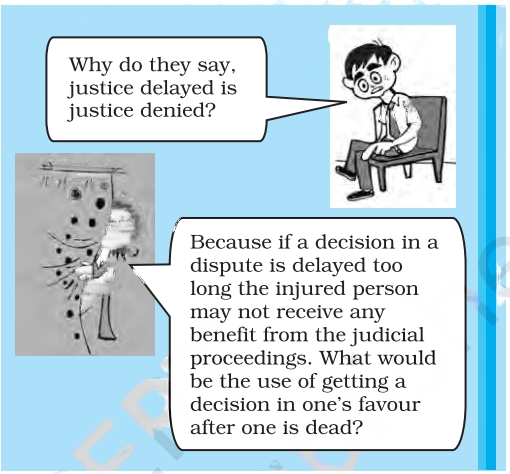Social Justice – Complete Guide For Class 11 Political Science Chapter 4

Welcome to iPrep, your Learning Super App. Our learning resources for the chapter, “Social Justice” in Political Science for Class 11th are designed to ensure that you grasp this concept with clarity and perfection. Whether you’re studying for an upcoming exam or strengthening your concepts, our engaging animated videos, practice questions and notes offer you the best of integrated learning with interesting explanations and examples.
Understanding social justice is not just an academic exercise; it’s essential for creating a fair and equitable society. Chapter 4, “Social Justice,” in the Class 11 Political Science curriculum delves into the core of what makes a society just. It challenges us to consider how resources and opportunities should be distributed and what role various institutions play in ensuring fairness. This chapter invites you to explore profound questions about justice, from its philosophical roots to practical applications in real-world scenarios. By examining different theories and approaches, you’ll gain a deeper appreciation for how social justice impacts every aspect of our lives, helping you become a more informed and thoughtful participant in societal discussions.
Social Justice
Chapter 4, “Social Justice,” from the NCERT Class 11 Political Science textbook delves into the concept of justice, exploring its various dimensions and interpretations. The chapter discusses the idea of just distribution, justice as fairness, and the pursuit of social justice, particularly the role of state intervention versus free markets in achieving a just society. Through these discussions, the chapter provides a comprehensive understanding of how justice is perceived and implemented in different contexts.
The concept of social justice is central to the functioning of any society. It involves ensuring that every individual has access to opportunities and resources that allow them to lead a dignified life. Chapter 4 of the NCERT Class 11 Political Science textbook, titled “Social Justice,” examines the philosophical foundations of justice, the principles of fair distribution, and how social justice can be achieved. This chapter encourages readers to think critically about the fairness of societal structures and the role of the state in ensuring justice for all.
Objectives Of Learning The Chapter
Now that we have analyzed the significance of the chapter, let’s know the objectives of studying “Social Justice”
- Understand the concept of justice and its different interpretations.
- Explore the principles of just distribution and how they apply to society.
- Analyze the idea of justice as fairness and its implications.
- Discuss the role of state intervention and free markets in pursuing social justice.
Now let’s explore the various sections of the chapter.
Firstly, to understand the concept of justice, let’s delve into the section “What is Justice?” of the chapter “Social Justice.”
What is Justice?
Equal Treatment for Equals
- Principle of Equality: Justice requires treating individuals equally in similar circumstances.
- Exceptions: There may be situations where unequal treatment is justified to ensure fairness.
Proportionate Justice
- Proportionality: Rewards or punishments should be proportional to the actions or contributions of individuals.
- Balance: Striking a balance between equality and proportionality is key to just outcomes.
Recognition of Special Needs
- Special Needs: Justice also involves recognizing and accommodating the special needs of individuals or groups.
- Inclusivity: Ensuring that all individuals, regardless of their circumstances, have access to necessary resources.

Now, to understand the distribution of resources, let’s examine the section “Just Distribution” of the chapter “Social Justice.”
Just Distribution
- Distribution Principles: Different principles, such as need, merit, and equality, guide the fair distribution of resources in society.
- Debates: The section explores the debates surrounding which principle should take precedence in various contexts.

Now, to understand the idea of fairness in justice, let’s explore the section “Justice as Fairness” of the chapter “Social Justice.”
Justice as Fairness
- John Rawls’ Theory: This section discusses John Rawls’ influential theory of justice, which emphasizes fairness as the core of justice.
- Veil of Ignorance: Rawls introduces the concept of the “veil of ignorance,” where individuals design society’s principles without knowing their position within it.
Now, to grasp how social justice can be achieved, let’s explore the section “Pursuing Social Justice” in the chapter “Social Justice.”
Pursuing Social Justice
Free Markets versus State Intervention
- Free Markets: The section discusses the role of free markets in achieving social justice, emphasizing efficiency and individual freedom.
- State Intervention: It also explores the role of the state in correcting market failures and ensuring a just distribution of resources.
- Balancing Act: The debate between free markets and state intervention is presented as a balancing act in the pursuit of social justice.
Finally, as we have gained comprehensive knowledge about the chapter ‘Social Justice’, let’s reflect on the overall learning value of this important lesson.
Overall Learning Value of the Chapter
Chapter 4, “Social Justice,” offers a deep dive into the multifaceted concept of justice, exploring how it is understood and applied in society. Through the examination of different principles of justice—such as equality, proportionality, and fairness—students gain a nuanced understanding of what it means to achieve a just society. The chapter also presents the ongoing debate between the roles of free markets and state intervention in promoting social justice, encouraging readers to critically evaluate these approaches. By understanding these concepts, students can better appreciate the complexities of justice and its importance in building a fair and equitable society.
In conclusion, Chapter 4, “Social Justice,” from the Class 11 Political Science curriculum provides a thorough exploration of the fundamental principles of justice. This chapter not only introduces the philosophical underpinnings of justice but also delves into practical aspects of how social justice can be pursued in contemporary society. By studying “Social Justice,” students gain valuable insights into the principles of equal treatment, just distribution, and fairness, as well as the ongoing debate between free markets and state intervention.
As you work through the concepts in “Social Justice,” remember that understanding justice is crucial for evaluating societal structures and fostering a more equitable world. The lessons from Chapter 4, “Social Justice,” will empower you to critically analyze and contribute to discussions about fairness and justice in various contexts.
At iPrep, we are dedicated to supporting your learning journey with resources designed to clarify and deepen your understanding of this important topic. With our engaging materials and comprehensive explanations, mastering “Social Justice” will be both insightful and rewarding.
Practice questions on Chapter 4 - Social Justice
Get your free Chapter 4 - Social Justice practice quiz of 20+ questions & detailed solutions
Practice Now








